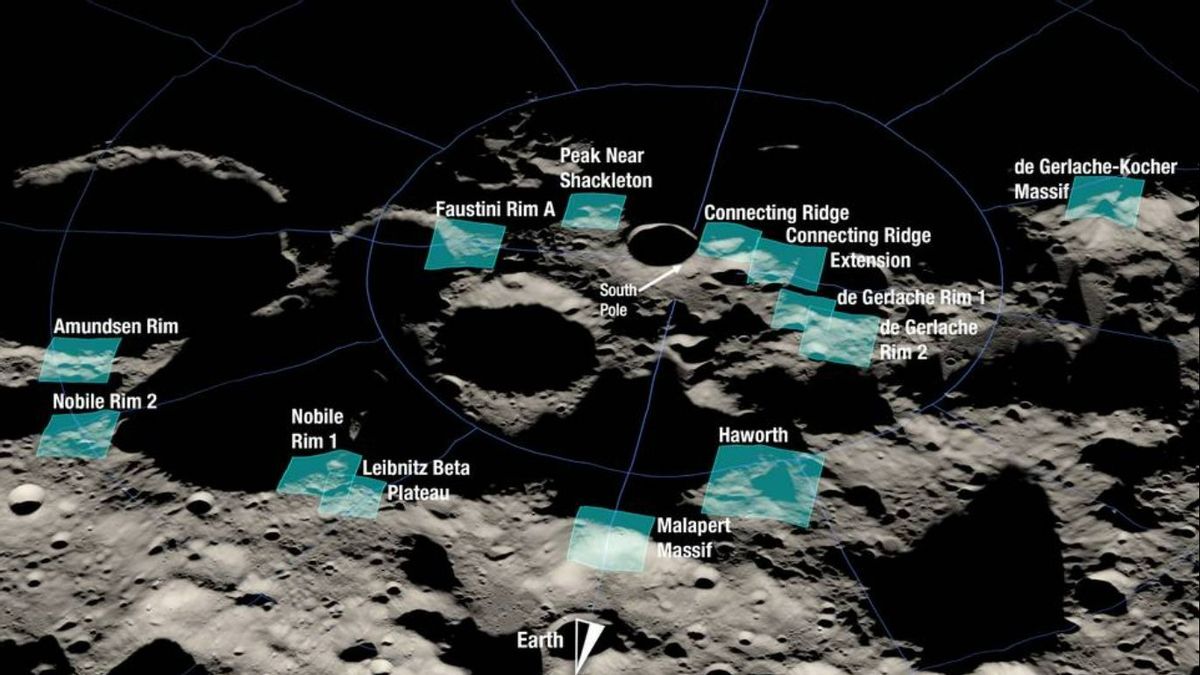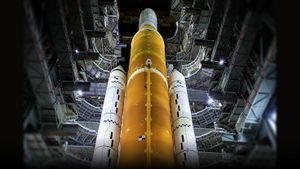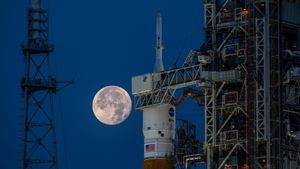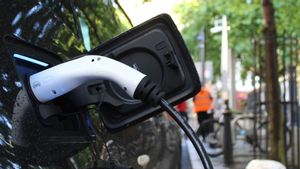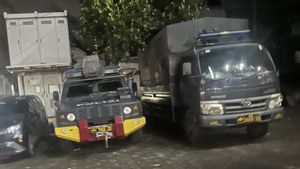JAKARTA - NASA plans to launch Artemis III a number of astronauts to the surface of the Moon, including landing the first woman there. Even so, NASA has not announced a more detailed time regarding this Artemis III mission. The United States space agency has just arrived at the stage of identifying a number of landing sites on Earth's satellites, namely around the south pole of the Moon.
Based on information from NASA's official website, there are at least 13 candidate locations for the Artemis III landing, namely:
- Faustini Rim A
- Peak Near Shackleton
- Connecting Ridge
- Connecting Ridge Extension
- de Gerlache Rim 1
- de Gerlache Rim 2
- de Gerlache-Kocher Massif
- Haworth
- Malapert Massif
- Leibnitz Beta Plateau
- Nobile Rim 1
- Nobile Rim 2
- Amundsen Rim
NASA reasoned these locations are areas that have not been explored by humans. According to NASA's website, all areas lie at six degrees of latitude to the Moon's south pole, an area that "contains a permanent shadow region rich in resources and in unexplored terrain by humans."
The dark side of the Moon is considered the oldest part of the Earth's satellite. The landing at this location will provide an opportunity for researchers to study the history of the Moon.
"Several proposed sites within the region lie between some of the oldest parts of the Moon, and together with the permanent shadow region, provide an opportunity to learn about the Moon's history through previously unstudied lunar material," said Sarah Noble, Artemis Moon Science lead for NASA's Division of Planetary Science.
SEE ALSO:
According to a Sputnik News report, all of the areas in question contain sites that will provide continuous access to sunlight throughout the mission, which is important because access to sunlight not only provides a power source, but also “minimizes temperature variations.”
Jacob Bleacher, NASA's chief exploration scientist, also said that "developing blueprints for exploring the solar system means learning how to use the resources available to us while also maintaining their scientific integrity."
"Moon water ice is very valuable from a scientific point of view as well as a resource, because from it we can extract oxygen and hydrogen for life support systems and fuels," added Bleacher.
The English, Chinese, Japanese, Arabic, and French versions are automatically generated by the AI. So there may still be inaccuracies in translating, please always see Indonesian as our main language. (system supported by DigitalSiber.id)
